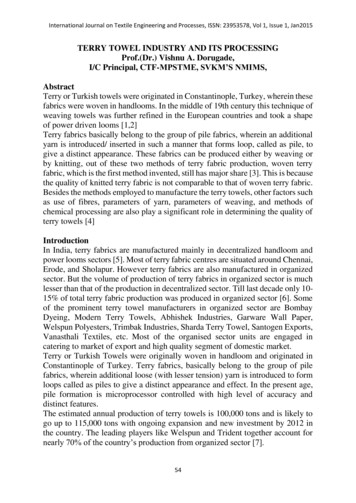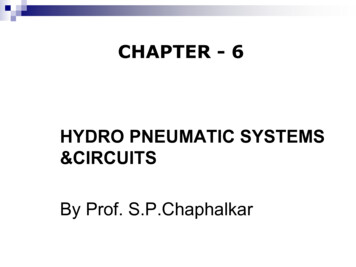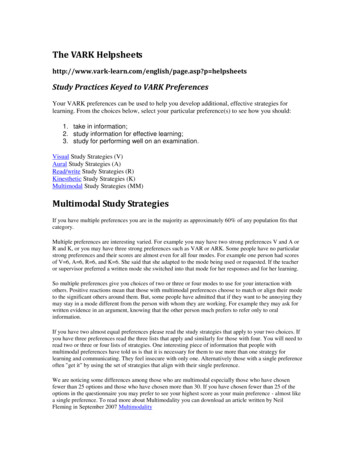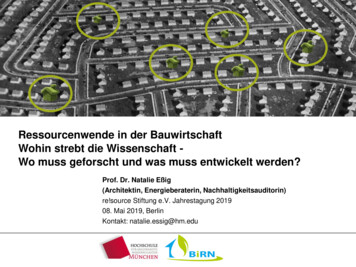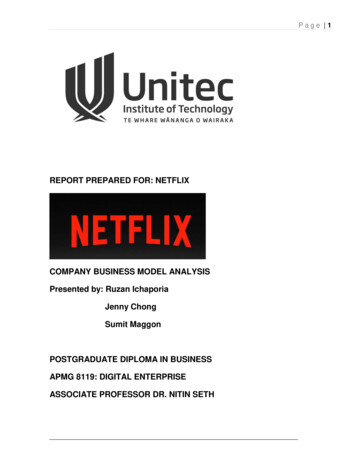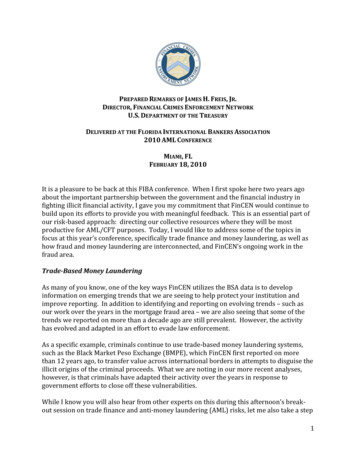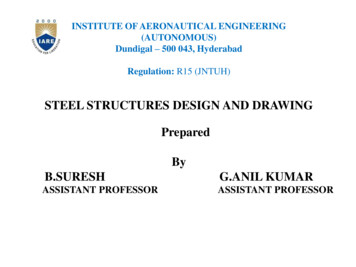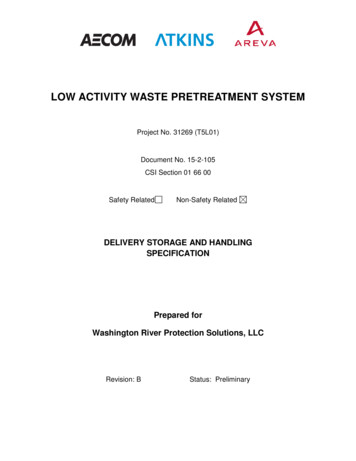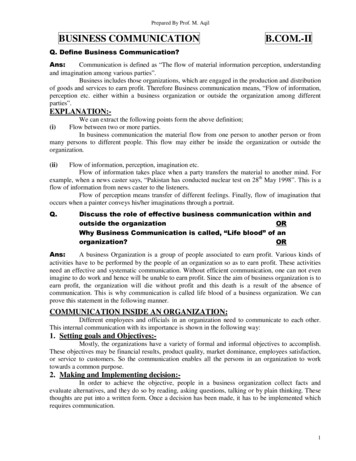
Transcription
Prepared By Prof. M. AqilBUSINESS COMMUNICATIONB.COM.-IIQ. Define Business Communication?Ans:Communication is defined as “The flow of material information perception, understandingand imagination among various parties”.Business includes those organizations, which are engaged in the production and distributionof goods and services to earn profit. Therefore Business communication means, “Flow of information,perception etc. either within a business organization or outside the organization among differentparties”.EXPLANATION:We can extract the following points form the above definition;Flow between two or more parties.In business communication the material flow from one person to another person or frommany persons to different people. This flow may either be inside the organization or outside theorganization.(i)(ii)Flow of information, perception, imagination etc.Flow of information takes place when a party transfers the material to another mind. Forexample, when a news caster says, “Pakistan has conducted nuclear test on 28th May 1998”. This is aflow of information from news caster to the listeners.Flow of perception means transfer of different feelings. Finally, flow of imagination thatoccurs when a painter conveys his/her imaginations through a portrait.Q.Discuss the role of effective business communication within andoutside the organizationORWhy Business Communication is called, “Life blood” of anorganization?ORAns:A business Organization is a group of people associated to earn profit. Various kinds ofactivities have to be performed by the people of an organization so as to earn profit. These activitiesneed an effective and systematic communication. Without efficient communication, one can not evenimagine to do work and hence will be unable to earn profit. Since the aim of business organization is toearn profit, the organization will die without profit and this death is a result of the absence ofcommunication. This is why communication is called life blood of a business organization. We canprove this statement in the following manner.COMMUNICATION INSIDE AN ORGANIZATION:Different employees and officials in an organization need to communicate to each other.This internal communication with its importance is shown in the following way:1. Setting goals and Objectives:Mostly, the organizations have a variety of formal and informal objectives to accomplish.These objectives may be financial results, product quality, market dominance, employees satisfaction,or service to customers. So the communication enables all the persons in an organization to worktowards a common purpose.2. Making and Implementing decision:In order to achieve the objective, people in a business organization collect facts andevaluate alternatives, and they do so by reading, asking questions, talking or by plain thinking. Thesethoughts are put into a written form. Once a decision has been made, it has to be implemented whichrequires communication.1
Prepared By Prof. M. Aqil3. Appraisal:Having implemented the decision, management needs to determine whether the desiredoutcome is being achieved. Statistics on such factors as cost, sales, market share, productivity andinventory levels are compiled. This is done through computers, manual papers, memos or reports.4. Manufacturing the products:Getting an idea for a new product out of someone’s head, pushing it through the productionprocess and finally getting the product also require communication. Designing the plan regardingproduct, introducing the workers, purchasing raw material, marketing and distributing the product allrequire effective communication.5. Interaction between employer & employee:Employees are informed about policies and decisions of employers through circulars,reports, notices etc. Employers also get in touch with employees through application, complaint etc.So, communication plays a vital role in the interaction of employer and employee.EXTERNAL COMMUNICATION:1. Hiring the employees:If a company wants to hire some one, it advertises the vacancy, receives applications, callsthe candidates, takes the interview and then offers job to the successful candidates. The whole processrequires communication.2. Dealing with customers:Sales letters and brochures, advertisements, personal sales calls, and formal proposals areall used to stimulate the customer’s interest. Communication also plays a part in such customer relatedfunctions as credit checking, billing, and handling complaints and questions.3. Negotiating with suppliers and financiers:To obtain necessary supplies and services, companies develop written specification thatoutlines their requirement. Similarly, to arrange finance, they negotiate with lenders and fill out loanapplications.4. Informing the investors:Balance sheet, income statement, and ratio analysis are used to inform the investorsregarding performance of business.5. Interacting with Govt.:Government agencies make certain rules to regulate the economy. These rules arecommunicated to organizations through various papers. These organizations try to fulfill, theserequirement like filling taxation form and other documents.Q. Define communication. What is the importance of communicationfor an individual and for an tion is the process by which information is transmitted betweenindividuals and organization, so that an understanding response results”.OR“Communication is the process which involves transmission and accurate replication ofideas, ensured by feedback for the purpose of eliciting action which will accomplish organizationalgoals”.IMPORTANCE OF COMMUNICATION FOR AN INDIVIDUAL(1) Helps in getting a desired job:Getting a desired job is not an easy task. It requires a person to be excellent, especially interms of communication abilities. Communication abilities can be classified into five categories that isreading, writing, speaking, listening and observing. If a candidate is a good reader of not only textbooks and reference books but also of newspapers and magazines, this would help him developing2
Prepared By Prof. M. Aqilconfidence level at the time of interview. Writing skills are necessary for preparing an appropriate Biodata and covering letter, so that a better initial impression could be created. No doubt, conversationalskill right at the time of interview is equally countable towards success of the candidate. Listeningabilities on the other could prove to be fruitful especially when the interviewer is making a commentor asking a question. In short we can say that the presence of above mentioned five communicationskills could give a better chance of being selected during an interview.(2) Help in maintaining social relationships:We as human beings live in a cobweb of relationships rather social relationship. Thesesocial relations compel us to act simultaneously in the capacity of father, child, husband, uncle,neighbour, cousin, teacher, nephew and so on. All these relationships especially near one’s could bemaintained properly if we can communicate well to all these relations, that we are here to take care ofthem and our services are always there to help them in case of any needs.(3) Helps in getting on the job promotion:Perhaps finding a job would not be a big deal in case of if the candidate is well connectedand belongs to a well off family. But promotion on the job requires some extra skills on the part of thecandidate. Amongst those skills, communication abilities rank on the top. If a person can speak wellduring interactive and presentation sessions, can reports properly, he will automatically be in the eyesof the management and whenever a chance for promotion comes, he will be on the top of the list.(4) Helps in solving other’s problems:It is commonly observed that around us there are so many people whom we like to meet,their company is a source of enrichment for us. When we are with them we feel secured. The onlyreason for such types of feelings is that such type of people are not only good listeners but they alsoknow it well that whenever they would speak, it would only be for the sake of encouraging, notdiscouraging others, only for solving other’s problems and not for creating problems for others. Suchpeople are no doubt excellent communicators.Q.4Differentiate between formal and informal language;Ans:Formal language:(1) It is the language spoken in office,business and other formal places.(2) Proper and standard words are used.(3) It consists of specific purpose wordslike manager, supervisor, owner,employer etc.(4) It is used comparatively less thaninformal language.(5) It is used when the speaker is relaxed.Informal Language:(1) It is the language spoken at home orwith friends.(2) Improper words and slangs are used.(3) It has all purpose words like “boss”that stands for various personalities.(4) It is used in daily life.(5) It is used when speaker is in a hurry/Q.Explain the process of communication.OR“Communication is a two way process of exchanging ideas orinformation between two human beings”. Explain this statement with thehelp of a diagram.3
Prepared By Prof. M. AqilAns:Communication simply means exchange of ideas & information between two persons. Aperson sends a message to another person and gets the response from the receiver on the message. Thiswhole phenomenon can be explained as under.1. Sender’s thoughts:The very first step in the process of communication is generation of thought in the sender’smind. These thoughts may be about a request, order, inquiry production or any other such activity.2. Encoding / Message:The thought generated in the mind of sender is ambiguous and unable to be communicatedunless it is put into a receivable form. This step is known as encoding where the sender converts histhought into a message by means of a language. For example, a sender thinks about having a job. Now,he will put his thought on a paper. That is called job application. In his way, his thought becomes amessage.3. Transmission through media:Once a thought is converted into message, it should be transmitted to the receiver through asuitable medium. This media might be electronic media as T.V., E-mail, radio etc. or it may be printmedia like newspaper, magazines, letters or merely sound that is transmitted through the medium ofair.4. Noise and Barriers:While transmitting the information to the receiver, the sender faces lots of barriers. Thesenoise and barriers are explained as under:(i)On sender’s side:- Noise and barriers may take place during the process of encoding.Some of them may be caused by distraction, lack of concentration, typing mistake, poorlanguage etc.(ii)In the medium:- Some barriers are caused by medium such as poor transmission onT.V. and radio misprinting in newspapers etc.(iii) On receiver’s side:- The receiver can also create certain barriers to the receiving ofmessage such as poor reading ability, emotions, lack of concentration etc.5. Decoding by Receiver:Having received the message form the sender, the receiver attempts to understand andinterpret the message. This process of converting the language of message into thoughts is known asdecoding. For instance, the receiver, having received job application, reads the application andunderstands the message conveyed by the applicant.6. Idea Received:As soon as the process of decoding is finished, the idea given by the sender is received bythe receiver. It means the thought that was generated in the mind of sender has been transmitted to themind of receiver. In our example, the sender wanted to inform the receiver about his thought of havinga job. Now the sender has got this idea.7. Feed back:Process of communication is incomplete until the receiver responds to the sender. Thisresponse may be negative, positive, or for further enquiry. It means when the receiver of jobapplication welcomes or regrets the sender, the process of communication is deemed to be complete.This whole process can be depicted through the following diagram.4
Prepared By Prof. M. AqilSender’sThoughtsEncodingTransmissionthrough mediaNoise & BarriersDecodingFeed BackIdea ReceivedQ. Discuss five elements (Factors) of the process of communication;Ans:Communication is the exchange of ideas between two minds. This process of exchangingidea is based on following five factors.1. Sender:Sender is the person who initiates the process of communication. He generates an idea inhis mind regarding production invention, innovation, request, order, enquiry etc. So, he is the firstfactor of communication process and his function is to generate an idea. Therefore, it is necessary thatthe idea should be clear, and convertible into message. For this purpose, the sender needs to apply hisknowledge and imaginative power.2. Message:The idea in the mind of sender is transformed into words that is called message. The senderdecides on the length, style, organization and tone of the message. The message may be presented inmany ways, depending on the subject, purpose, audience, personal style, mood and culturalbackground.3. Media:The media of transmission of message are electronic media as T.V., radio, computer andprint media as newspapers, letter, magazine etc. media play a very important role in helping thereceiver’s understand the message. A wrongly chosen medium can interrupt the process ofcommunication, Selection of medium depends upon message, audience, urgency and situation.4. Receiver:Receiver is the person who gets the message from the sender, decodes it, understands it andinterprets it.5. Feed Back:Having understood the message, the receiver responds to the sender in yes or no or asksfurther questions. This process is called feedback.Q.Explain in detail verbal and non verbal communication?Ans:VERBAL COMMUNICATION: Verbal communication means such a communicationthat takes place by means of a language or words”. It includes the following contents.a.Oral communication (Speaking & listening)b.Writte
Therefore Business communication means, “Flow of information, . “Pakistan has conducted nuclear test on 28th May 1998”. This is a flow of information from news caster to the listeners. Flow of perception means transfer of different feelings. Finally, flow of imagination that occurs when a painter conveys his/her imaginations through a portrait. Q. Discuss the role of effective business .
